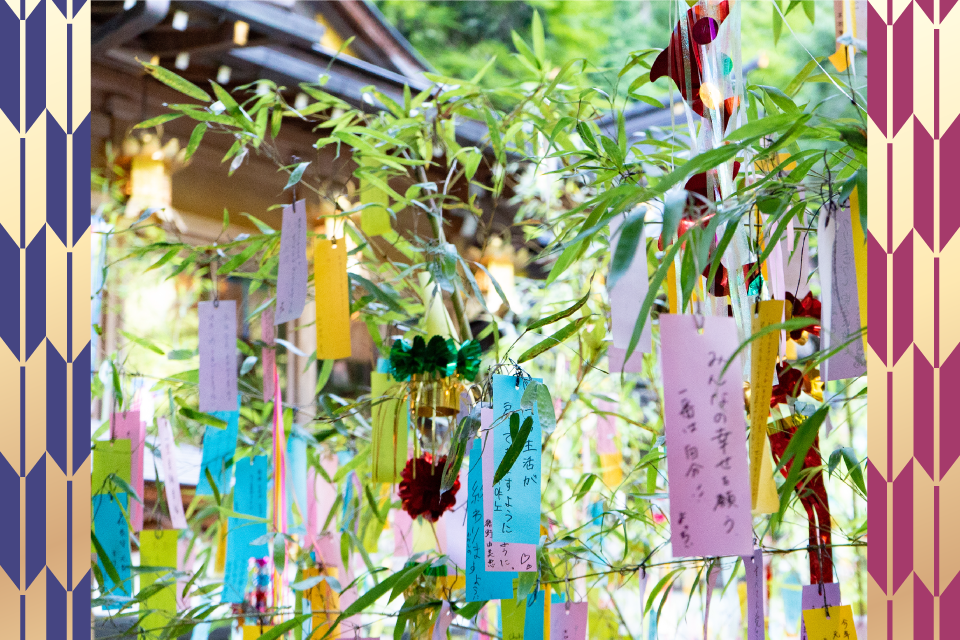

Tanabata is Japan’s enchanting Star Festival, where people write wishes on colorful paper and hang them on bamboo. Rooted in a romantic legend, it’s also a fun way to explore Japanese culture—through yukata, traditional sweets, and handmade decorations. Whether you’re in Japan or abroad, Tanabata invites everyone to share dreams under the stars.
What Is Tanabata? The Meaning and Origin of Japan’s Star Festival

Tanabata is a Japanese star festival celebrated every summer, where people write wishes on colorful paper strips and hang them on bamboo branches. The word Tanabata (七夕) literally means “Evening of the Seventh,” referring to the seventh day of the seventh month (July 7 on today’s calendar). On this night, according to legend, two star-crossed lovers separated by the Milky Way are allowed to reunite. Tanabata originated from an ancient Chinese festival and has been celebrated in Japan for over a thousand years. It’s a romantic tradition of hope and dreams, and although it’s uniquely Japanese, its themes of love and wishing upon stars feel universal.
The Legend of Orihime and Hikoboshi
At the heart of Tanabata is a beautiful legend about Orihime, the Weaver Princess, and Hikoboshi, the Cowherd. Orihime wove cloth for her father, the Sky King, while Hikoboshi tended cattle across the Amanogawa (Milky Way). The two fell in love and married, but became so happy that they neglected their duties. Angered, the Sky King separated them with the Milky Way and forbade them to meet.
Moved by Orihime’s sorrow, the Sky King allowed them to reunite once a year, on the seventh day of the seventh lunar month. On that night, when no bridge could be found across the stars, a flock of magpies formed a bridge with their wings. However, if it rains, the birds cannot come, and the lovers must wait another year. Orihime is associated with the star Vega and Hikoboshi with Altair, which shine on opposite sides of the Milky Way. On Tanabata night, many people look up at the sky, hoping for clear weather so the lovers can meet.
Why Tanabata Is Celebrated on July 7
Tanabata is celebrated on the seventh day of the seventh month, originally based on the traditional lunisolar calendar. To match the true mid-summer season, some regions still observe it in early August. However, most of Japan now celebrates it on July 7 using the Gregorian calendar. This date is seen as the only time Orihime and Hikoboshi can meet, giving the night special meaning.
Even in places like Sendai, where Tanabata is held in August for better visibility of the Milky Way, the spirit remains the same — a once-a-year reunion of the stars. The focus on the number 7 adds a sense of good fortune, and similar festivals like China’s Qixi and Korea’s Chilseok share the same lunar date, showing the cultural connection across East Asia.
Symbols and Traditions: Tanzaku, Bamboo, and Stars
A central custom of Tanabata is writing wishes on tanzaku — colorful paper strips — and hanging them on bamboo. Bamboo grows tall and straight, symbolizing the upward journey of hopes to the heavens. Wishes range from a child’s dream of “getting better at soccer” to adult prayers for love or health. These decorated bamboo displays appear in homes, schools, and public spaces, creating a festive, heartfelt scene.
Bamboo is also seen as sacred in Japan, once believed to carry prayers to the gods. Alongside tanzaku, people hang origami ornaments like cranes for long life, streamers for weaving, and purses for prosperity. Stars play a key role too — Vega (Orihime) and Altair (Hikoboshi) shine across the Milky Way (Ama-no-gawa). Star motifs appear in food, lanterns, and decorations, adding to the dreamy beauty of Tanabata.
How Tanabata Is Celebrated in Japan

Tanabata may have originated from a quiet court ritual, but today it’s a vibrant summer celebration enjoyed nationwide. Different regions in Japan put their own spin on the Star Festival. Many neighborhoods and schools erect bamboo branches for people to hang wishes, and some shrines and temples host small Tanabata ceremonies. But the most eye-catching celebrations are the Tanabata Matsuri (star festival fairs) that take place in various cities. These range from local gatherings to massive regional festivals with decades of history. Let’s look at some of the most famous Tanabata celebrations in Japan, as well as the festive customs, foods, and attire that accompany them.
Popular Tanabata Festivals (Sendai, Hiratsuka, Anjo)
Japan is home to three particularly famous Tanabata festivals, known as the “Three Great Tanabata Festivals”. These are held in Sendai (Miyagi Prefecture), Hiratsuka (Kanagawa Prefecture), and Anjo (Aichi Prefecture). Each offers a distinct experience, but all of them showcase the magic of Tanabata on a grand scale.
Sendai Tanabata Festival (Miyagi)

| Detail | Information |
| Dates | August 6–8 every year (2025: Aug 6–8) |
| Location | Downtown Sendai – around Sendai Station and shopping arcades citywide |
| Admission | Free (open street festival) |
| Contact | Sendai Tanabata Festival Association (c/o Sendai Chamber of Commerce, Tel: 022-265-8185) Official website |
Shonan Hiratsuka Tanabata Festival (Kanagawa)Anjo Tanabata Festival (Aichi)

| Detail | Information |
| Dates | Early July annually (2025: July 4–6, Fri–Sun) |
| Location | Hiratsuka Station area (Downtown Hiratsuka, Kanagawa) |
| Admission | Free |
| Contact | Shonan Hiratsuka Tanabata Festival Committee (c/o Hiratsuka City Tourism Dept., Tel: 0463-35-8107) Official Website |
Anjo Tanabata Festival (Aichi)

| Detail | Information |
| Dates | Early August annually (2025: Aug 1–3, Fri–Sun) |
| Location | Anjo city center (around Anjo Station, Aichi) |
| Admission | Free |
| Contact | Anjo Tanabata Festival Association (c/o Anjo City Commerce Dept., Tel: 0566-71-2235) Official website |
These popular festivals show how Tanabata ranges from elegant and traditional in Sendai, to dynamic and entertainment-packed in Hiratsuka, to heartwarming and community-driven in Anjo. Many other places in Japan also celebrate Tanabata in their own way – from shopping mall decorations in Tokyo to small town events. No matter the scale, you’ll find the common threads of colorful wishes, the romantic legend, and a festive summer charm.
Traditional Decorations and Wish-Making
Decorating bamboo with handwritten wishes is the heart of Tanabata in Japan. In early July, schools, shops, and public spaces display bamboo branches with tanzaku—colorful paper strips for writing hopes and dreams. From passing exams to traveling the world, people of all ages take part. These wish trees bring color, joy, and a sense of connection to the season.
Children often learn the story of Tanabata through songs, crafts, and seven classic paper ornaments, each with symbolic meaning. On July 6 or 7, families place their decorated bamboo outside to welcome good spirits. In some regions, the bamboo is later floated down a river or burned to send the wishes skyward—keeping the tradition both festive and spiritual.
Seasonal Foods and Festive Atmosphere
Tanabata is often celebrated with somen noodles, a chilled summer dish. The long, thin strands represent the Milky Way and Orihime’s woven threads. This tradition dates back to the Edo period, evolving from a Chinese dish once eaten for good health. Today, somen may be topped with star-shaped okra or served as nagashi-somen.
Other festive foods include chirashi-zushi with colorful, star-shaped toppings and refreshing fruits like watermelon and peaches. Lantern-lit bamboo trees create a romantic mood, with yukata-clad visitors strolling the streets, enjoying sweets like cotton candy and ramune on this dreamy summer night.
Experiencing Tanabata with Yukata and Local Events
Wearing a yukata adds charm to Tanabata. These light summer kimono, decorated with seasonal designs, are worn by many during festivals. In tourist spots, you can rent one and join the celebration. From major events like Sendai to small local fairs, visitors can enjoy writing wishes, making ornaments, and watching cheerful performances by children.
Tanabata often blends with cultural experiences. You can join workshops to make fukinagashi streamers or enjoy a tea ceremony with star-shaped sweets. In hot spring towns, yukata parades under lanterns create a dreamy scene. These sensory moments—lights, sounds, textures—make the festival feel magical and deeply memorable.
Tanabata Abroad: How Other Countries Celebrate
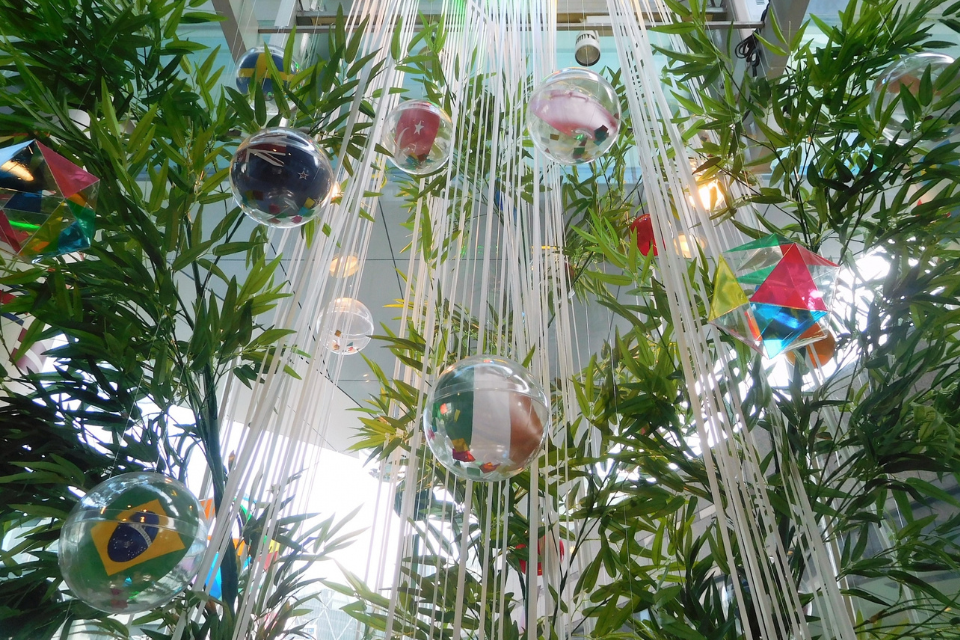
Tanabata has roots in East Asia and shares similarities with star festivals in China and Korea. While uniquely Japanese, its themes of love and wishes are universal, inspiring celebrations even in places without traditional ties. Let’s explore how Tanabata and its cousins are celebrated across the world.
China’s Qixi Festival and Its Connection to Tanabata
China’s Qixi Festival (七夕节, Qīxì), celebrated on the seventh day of the seventh lunar month, is the origin of the Tanabata legend. Traditionally, young women prayed for skills like weaving and offered fruits and qiaoguo pastries to the stars. Today, it’s known as Chinese Valentine’s Day, where couples exchange gifts and enjoy romantic events. Taiwan also celebrates with lights and festive gatherings.
Korea’s Chilseok and Similar Star Lore
Korea’s version of the Double Seventh Festival is Chilseok (칠석), held on the 7th day of the 7th lunar month. It shares the same star-crossed lovers’ tale as Tanabata but traditionally focused on health and seasonal change. Celebrated with foods like wheat pancakes and pumpkin dishes, Chilseok marks the start of the rainy season. Though less known today, it’s sometimes introduced as Korea’s traditional Valentine’s Day.
Celebrations by Japanese Communities in the U.S., Brazil, Taiwan
Thanks to Japanese immigrants and enthusiasts, Tanabata has traveled far beyond Japan’s borders.
Los Angeles Tanabata Festival
| Facility | Information |
| Location | Little Tokyo, Los Angeles, California |
| Organizer | Nisei Week & Local Japanese American Community |
| Held Since | 2009 |
| Date | Mid-August (during Nisei Week) |
| Events | Parade, tanzaku writing, cosplay, traditional dance |
São Paulo Tanabata Matsuri
| Facility | Information |
| Location | Liberdade District, São Paulo |
| Participants | Over 100,000 visitors annually |
| Key Features | Bon odori, Japanese/Brazilian food, tanzaku in Portuguese |
Taiwan Tanabata Events
Events are typically hosted in places like Huashan Culture Park (Taipei), with shrine gates, bamboo wish trees, and Tanabata-themed experiences like yukata try-ons and outdoor anime screenings.
How to Experience Tanabata Outside Japan
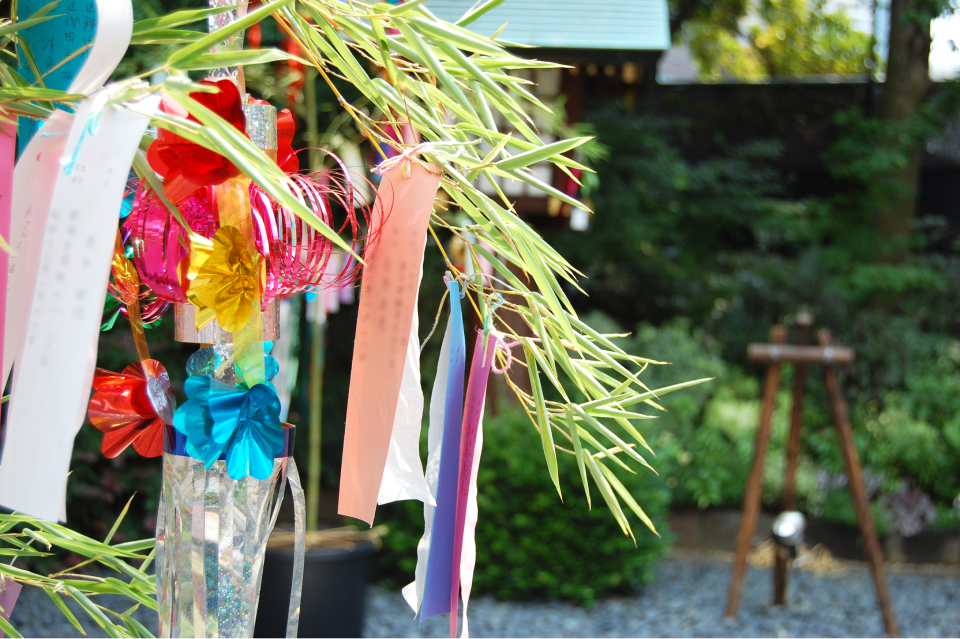
You don’t have to be in Japan to enjoy Tanabata. In fact, Tanabata’s beauty lies in its simplicity – anyone, anywhere can partake in the spirit of the festival with a few easy activities. Whether you’re an educator wanting to introduce your students to world cultures, a parent looking for a fun summer tradition, or just a curious individual, here are some ways to experience Tanabata outside Japan.
DIY Tanabata: Decorations, Tanzaku, and Bamboo Displays
Creating Tanabata decorations at home is simple and fun. Use a bamboo stalk or a branch in a vase as your “Tanabata tree.” Cut colorful paper strips, write wishes on them, and hang them from the branches. You can also add a phrase that means “May my wish come true” to personalize your message.
Make it festive with handmade ornaments like paper chains, origami stars, cranes, or fukinagashi streamers. Paper kimonos and cranes symbolize health and happiness. Crafting with friends or family, while playing Japanese music, adds a warm cultural touch to the celebration.
Display your wish tree on July 7 and enjoy the rustling sound as the wind carries your hopes. Add lights or stars for a magical Milky Way effect. This creative celebration fosters learning, reflection, and joy—just like any meaningful cultural tradition.
Discover the Magic of Tanabata and Japanese Traditions in Japan

Experience Tanabata like a local—wear a yukata, make colorful decorations, and enjoy traditional Japanese sweets.These simple joys add a special cultural touch to your summer visit to Japan.
Discover 3 Unique Tanabata × Japanese Culture Experiences Curated by Motenas Japan.
Celebrate the Star Festival with hands-on cultural activities that turn your trip to Japan into a truly unforgettable, tailor-made journey!
- Feel the Spirit of Japanese Summer: Celebrate Tanabata in a Yukata
- Hands-On Culture – Create Your Own Tanabata Decorations
- A Taste of the Season – Tanabata and Traditional Sweets
*Click to go to the details of the project.

Feel the Spirit of Japanese Summer: Celebrate Tanabata in a Yukata
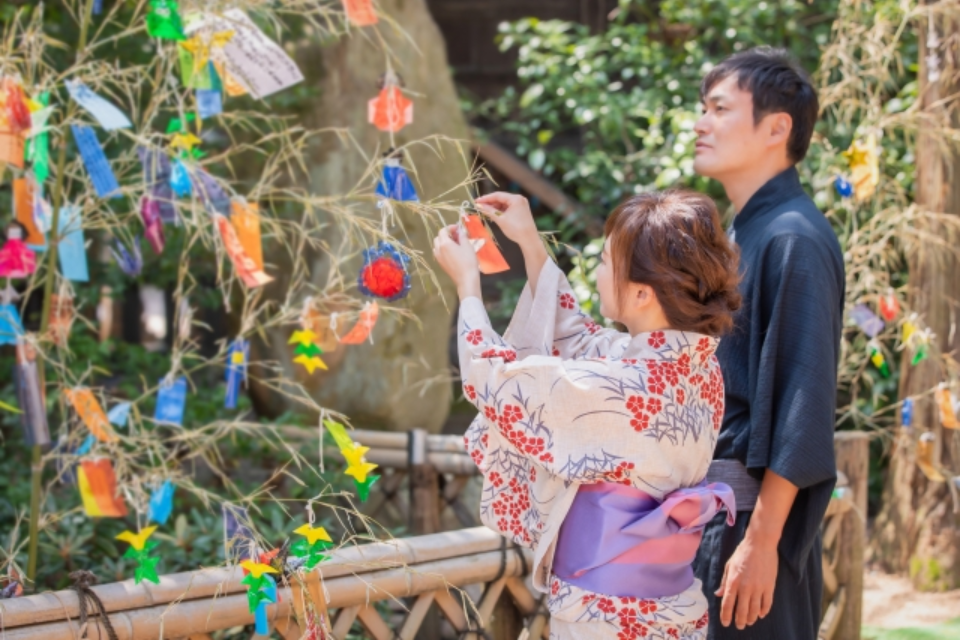
During Tanabata season, it’s common to see people strolling through streets in colorful yukata—light summer kimono that bring charm and elegance to the festive atmosphere. Wearing a yukata is a fun and accessible way to step into traditional Japanese culture, offering a chance to feel the rhythm of the season and join in local celebrations.
Many tourist spots and Tanabata events provide yukata rental and dressing services, making it easy for anyone to participate. This hands-on cultural experience is especially popular among international travelers, adding a personal and memorable touch to their time in Japan.

Hands-On Culture – Create Your Own Tanabata Decorations

Tanabata decorations like colorful tanzaku (wish strips), streamers, and origami cranes offer a hands-on way to enjoy Japanese culture. Using washi and origami paper, people of all ages can create beautiful ornaments while learning traditional craft techniques.
At Motenas Japan, you can join a workshop to make your own decorations. Try crafting a flowing streamer or write a wish on a tanzaku to hang on bamboo. It’s a fun and meaningful way to connect with the spirit of Tanabata through creativity.
A Taste of the Season – Tanabata and Traditional Sweets
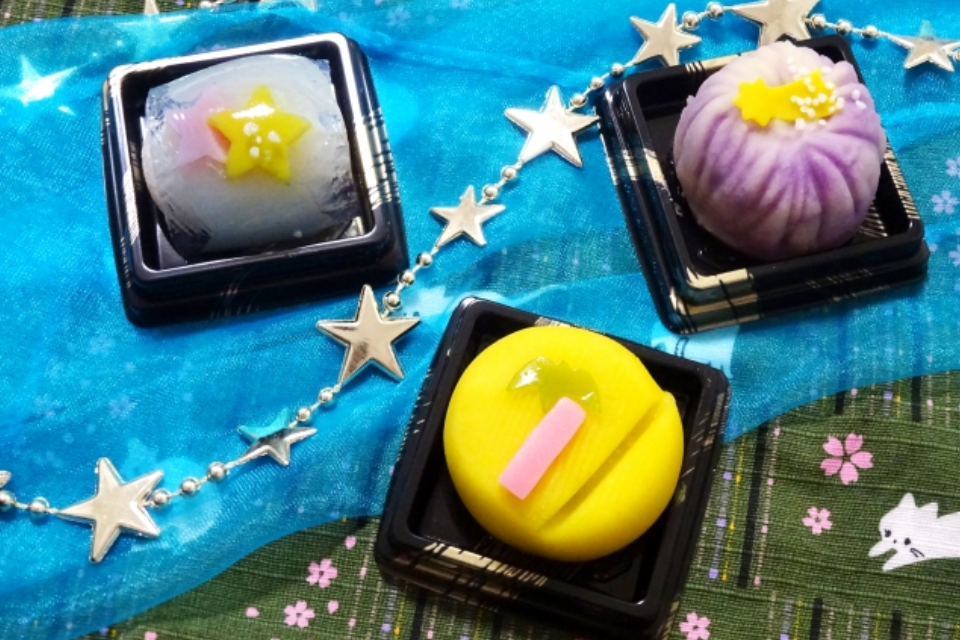
During Tanabata, many Japanese sweets are beautifully shaped like stars and the Milky Way, capturing the spirit of the season. Their delicate look and subtle flavors offer a perfect way to enjoy Japan’s refined sense of beauty.
At Motenas Japan, you can enjoy these seasonal wagashi as part of a Japanese tea ceremony experience. Surrounded by seasonal flowers and traditional hospitality, guests can savor Tanabata-themed sweets while learning about the art of matcha. It’s a graceful and memorable way to immerse yourself in Japanese culture. These beautiful sweets also make wonderful souvenirs to share the magic of Tanabata with others.


Tanabata Brings People Together Across Cultures
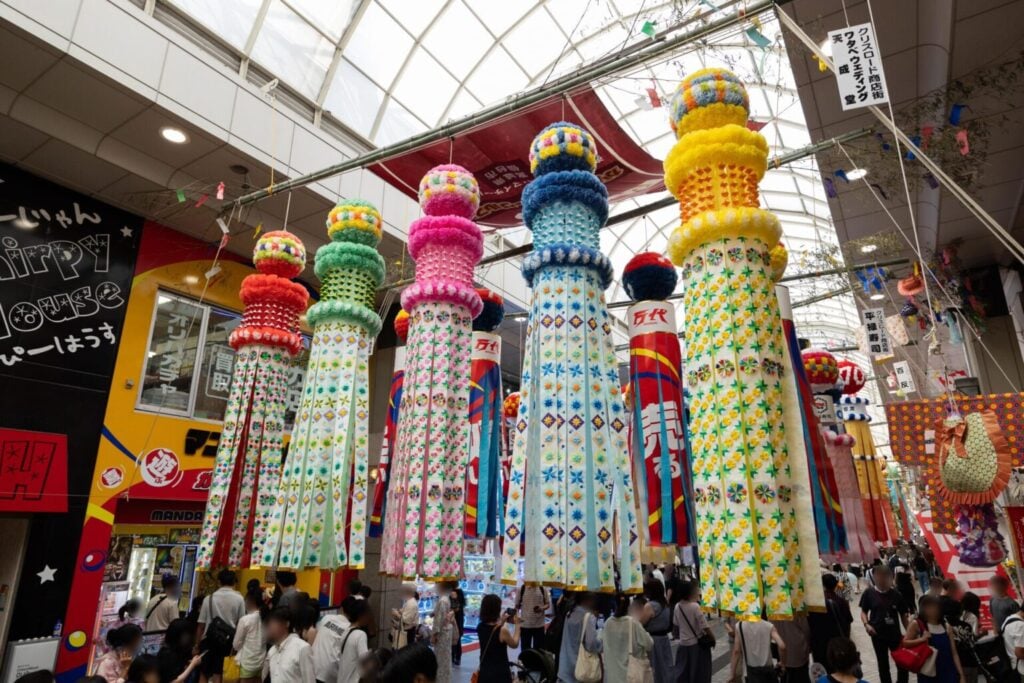
Tanabata encapsulates the idea that a simple act of making a wish can bring people together across distances – be it the distance between stars or between cultures. By sharing in this festival, we share in each other’s dreams and stories, weaving a larger tapestry of understanding. As we celebrate Tanabata abroad, we carry on a beautiful piece of Japan’s culture while also reinforcing the universal bonds of love and hope that connect us all under the same sky.

旅をこよなく愛するWebライター。アジアを中心に16の国にお邪魔しました(今後も更新予定)。
ワーホリを機にニュージーランドに数年滞在。帰国後は日本の魅力にとりつかれ、各地のホテルで勤務。
日本滞在が、より豊かで思い出深いものになるように、旅好きならではの視点で心を込めてお届けします!





